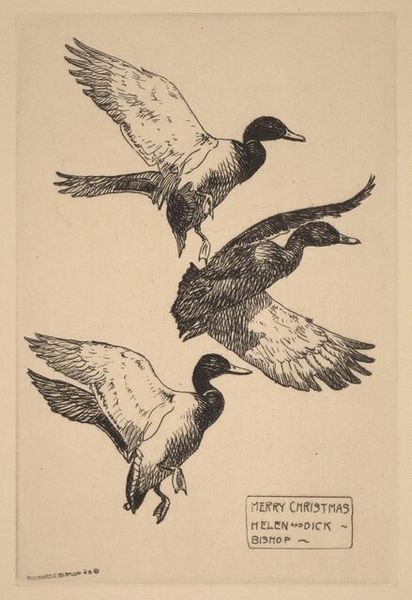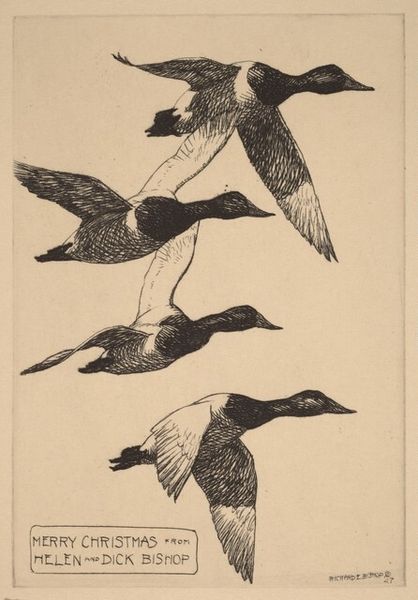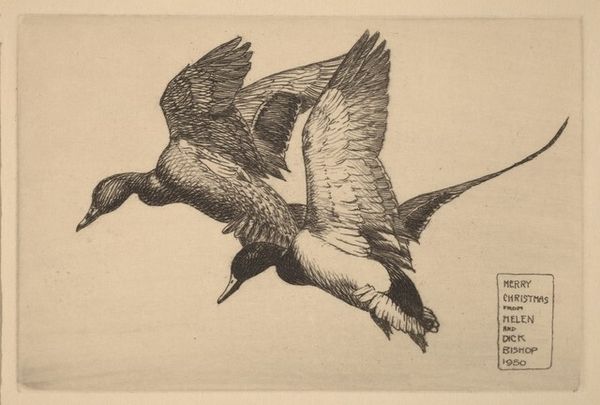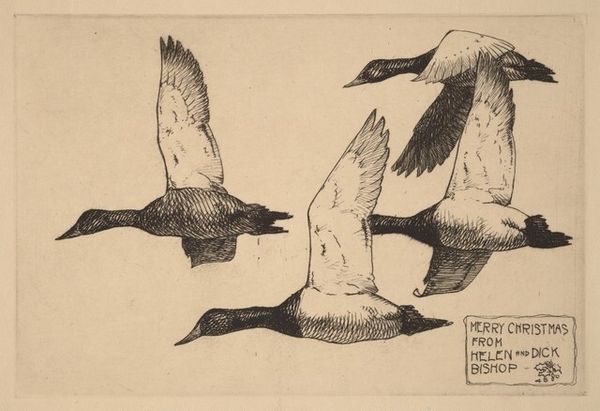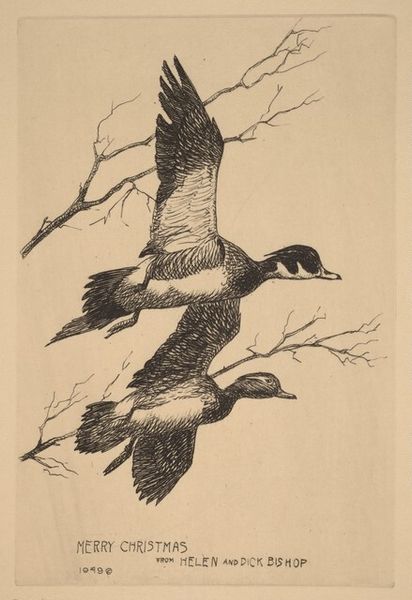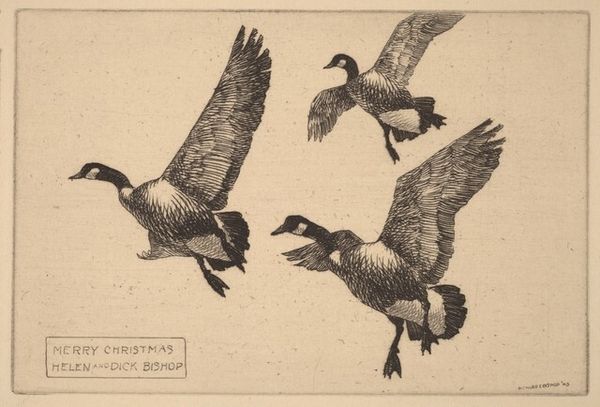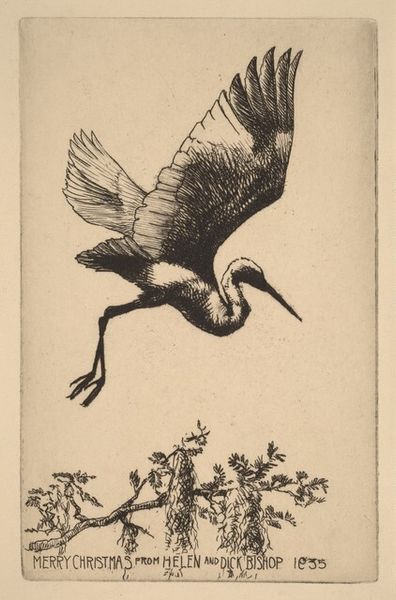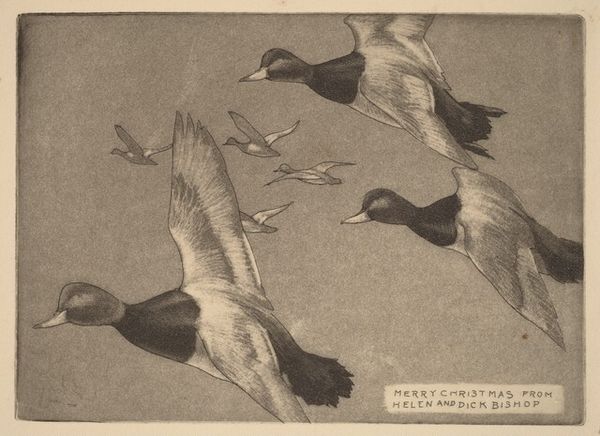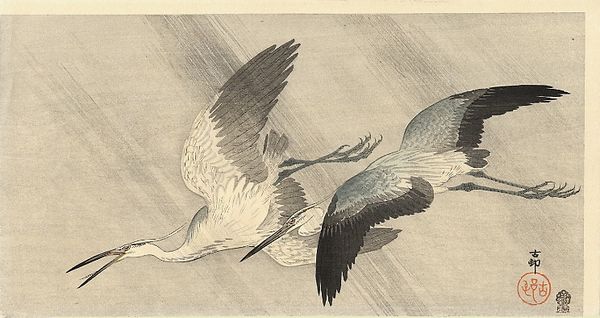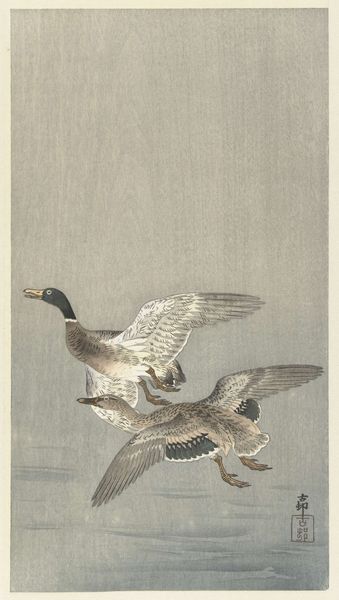
drawing, print, etching, engraving
#
drawing
# print
#
etching
#
landscape
#
figuration
#
pencil drawing
#
engraving
#
realism
Copyright: National Gallery of Art: CC0 1.0
Editor: So, this is "Christmas Card from Helen and Dick Bishop" created in 1952. It seems to be an etching or engraving. The composition, with these two geese in flight, feels incredibly dynamic, doesn't it? What strikes you most about it from a formalist perspective? Curator: Indeed. Note the artist's use of line – a veritable constellation meticulously etched across the birds' bodies and wings. This creates a rich textural contrast, especially where the density of the lines shifts to suggest areas of light and shadow. The form is rendered entirely through these linear modulations. Editor: The lines really do give them volume, it’s amazing. So, the overall composition with the stark figures on the canvas, contributes to the essence of the work as well? Curator: Precisely. How does the artist draw attention and construct focus with the limited elements? The positioning of the geese, their wings at slightly different angles, and the implied movement… all speak to a concern for visual rhythm and spatial relationships within the picture plane. Note how the lower goose's feet create a strong diagonal leading into the composition. Editor: I see it now! Is the intention of that rhythm to drive the viewer’s eyes upward in a clockwise fashion? Curator: That is a tenable perspective to defend. Can you determine any geometric organization or repetition beyond the use of diagonal motion? It’s curious the artist included this in a card during Christmas, and I wonder what else the arrangement means. Editor: Now that you point it out, the shapes within the wings create tessellations that resemble Christmas ornaments. Curator: Very good! I hadn’t noticed that before, but your reading is solid given how the light catches the figures on display. Form, in this case, truly following function!
Comments
No comments
Be the first to comment and join the conversation on the ultimate creative platform.
